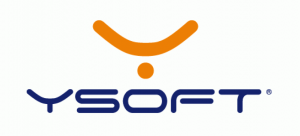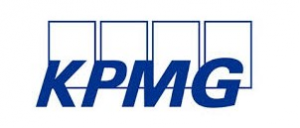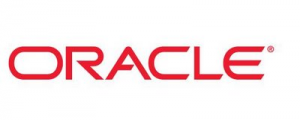Next steps for the accounting for dynamic risk management project
4.06.2015Company: EY
The new hedge accounting requirements in IFRS 9 Financial Instruments (issued in November 2013) align hedge accounting more closely with actual risk management, resulting in more useful information for users of financial statements. However, the requirements were developed with static risk management strategies in mind, and so do not fit well for dynamic or open portfolios, where frequent changes are made to risk positions and risk management instruments are frequently adjusted. The aim of the International Accounting Standards Board’s (IASB or Board) accounting for dynamic risk management (DRM) project is to simplify and improve the usefulness of financial statements by providing information about the risks to which an entity is exposed and how they are managed. The board intends to pursue this aim by developing accounting requirements for hedging within the context of open portfolios, which are more closely aligned with an entity’s risk management activities and by reducing operational complexity.
In April 2014, the IASB issued a discussion paper DP/2014/1 Accounting for Dynamic Risk Management: a Portfolio Revaluation Approach to Macro Hedging (DP), outlining a new accounting model, the portfolio revaluation approach (PRA). When applying the PRA, an entity would adjust the exposures that are being dynamically risk managed to reflect the effect of changes in value that arise from the risk that is being managed. Risks that are not dynamically managed (e.g., credit margin) would not be included in the revaluation. Accordingly, the PRA is not a full fair value model.
The revaluation of the managed positions with respect to the managed risk would largely offset the effect of fair value changes of the risk management instruments (for example, interest rate swaps) used to mitigate those risks. Without the need for artificial one-to-one hedge designations, it was hoped that the level of offset presented in the statement of profit or loss on application of the PRA might provide useful information on DRM activity.
The DP describes the PRA as a new accounting approach and not an extension to existing hedge accounting guidance. This means that the approach is not necessarily restricted by the constraints and previous decisions affecting hedge accounting under IFRS. This allows the IASB to reopen discussions on the accounting implications of certain key risk management practices, such as behaviouralisation of demand deposits and the role of internal derivatives.
The DP largely focuses on banks’ DRM of interest rate risk, but there was an expectation that application of the PRA to other risks and industries would be considered subsequently.
Following the end of the DP comment period on 17 October 2014, the IASB received 126 comment letters and undertook significant outreach activities.
High-level summary of DP responses
Most respondents supported the need for the project, but there was no consensus on the solution. Some felt the PRA was too ambitious and would require significant and unacceptable departures from the conceptual framework, others felt that such a wholesale change to the accounting for banks’ interest rate portfolios was neither justified nor required.
One of the key questions in the DP is the scope of the PRA: whether it should be applied only to dynamically managed risk positions that are hedged or whether it should also include risk positions that are intentionally left unhedged as part of DRM. Many users would appreciate the information that application of the PRA including intentionally unhedged positions would provide, but there was no consensus as to where the information should be presented: in the P&L, OCI or as a disclosure in the notes. However, if the PRA were to be applied, then most preparers would only support a scope focused purely on hedging activity. Most preparers do not believe that the impact of risk management decisions not to hedge is relevant in the current period profit or loss.
Many respondents agreed that any accounting model that attempted to represent DRM faithfully could not exclude significant risk exposures such as those that arise from behaviouralised demand deposits. However, some users and regulators raised concerns about the potential for earnings management, comparability and the impact of changes in assumptions.
Despite the support from users of financial statements for the information that the PRA might provide, many preparers undertaking DRM focus on stabilisation of net interest income (NII) and do not believe that a revaluation approach would represent their DRM faithfully. In particular, preparers noted that any impact DRM has on future NII should be reflected in future reporting periods, consistent with an amortised cost approach, and not, as proposed in the DP, in the current period.
Some respondents suggested alternative approaches in their response to the DP. These included:
- Amending the IAS 39 Financial Instruments: Recognition and Measurement portfolio fair value hedge accounting model to include behaviouralised demand deposits, sub benchmark exposures, and a bottom layer approach
- Using risk management derivative cash flows to represent fair value offset from hedged items if it can be proven that the derivatives mitigate risk (i.e., they reduce NII sensitivity)
- Deferring fair value changes in risk management derivatives to OCI under specified conditions.
Board discussions to date
The findings from respondents were presented to the IASB during the February and March 2015 meetings. At the May meeting, the discussion focused on the next steps for the project.
The May agenda paper noted that the varying views on the solution outlined in the DP are largely driven by the varying views on the objective for the project. Typically, preparers wish to manage volatility in profit or loss from accounting mismatches due to DRM activity. In contrast, users are more focused on having transparent information on DRM, including the extent of unhedged positions.
How we see it
Unless agreement is reached as to the objectives of the project, it will be difficult to see how it can move forward. Without this clarity, it will be challenging for the project to deliver a solution that reconciles differing perspectives, whilst also giving consideration to the constraints of the conceptual framework.
Given the acknowledged difficulties with the existing hedge accounting requirements when applied to DRM, the IASB agreed that the status quo is not sustainable. There is still a need to address the difficulties of applying static hedge accounting requirements to DRM, as well as the restrictions on eligible risk management exposures, such as demand deposits, within a hedge accounting framework. However, the IASB recognises that implementing the PRA (as it was described in the DP) would not be feasible; at the very least some changes to the proposals in the DP would be required.
The IASB considered the alternative proposals suggested in some comment letters, but felt that they were not well developed in the response to the DP. In particular, the alternative proposals did not provide sufficient resolution of the issues in current hedge accounting.
Next steps
It was agreed that the next step for the project will be to focus on identifying the information needed to provide more decision useful information on DRM. This will not be restricted to disclosures in the notes to the financial statements, as some of the information identified may ultimately be provided in the primary financial statements through recognition and measurement. The IASB believes that this exercise will better inform how it should develop those recognition and measurement requirements. Meanwhile, it is recognised that it would also be difficult to deliver all the information required to understand DRM through recognition and measurement only, without accompanying disclosures. This is because DRM is typically forward looking and involves a number of potential scenarios, while measurement is a point-in-time record of performance.
Under the selected approach, the IASB will focus on meeting users’ needs for information on the drivers and sources of NII, while also considering the preparer perspective. In particular, for behaviouralised demand deposits, the proposal is to investigate existing regulatory requirements to attempt to address users’ requests for transparency on estimates and assumptions.
How we see it
An alternative approach would have been for the IASB to expand the disclosure requirements in IFRS 7 Financial Instruments: Disclosures to incorporate information on DRM. However, the IASB has clearly indicated that there is no plan to amend IFRS 7 for dynamic risk management in advance of a new standard on the recognition and measurement.
Based on the responses in the comment letters received related to DRM for ‘other risks’, the IASB has decided to prioritise DRM of interest rate risk. Other risks, such as foreign exchange, will only be considered at a later stage.
The IASB considered whether it would be helpful to initiate an Expert Advisory Panel. They concluded that given the agreed next steps of the project and the volume of information already received, it did not make sense to set up an Expert Advisory Panel at this point in time. Instead, the IASB may establish one at a later stage in the project.
What you need to know
- The IASB will focus initially on the information needs of constituents required to reflect better entities’ dynamic risk management activities.
- The board then plans to address those information needs through disclosures before considering those areas that need to be addressed through recognition and measurement.
- Although the first step is focussing on information needs and disclosures, there is no intention to turn this into a disclosure-only project.







